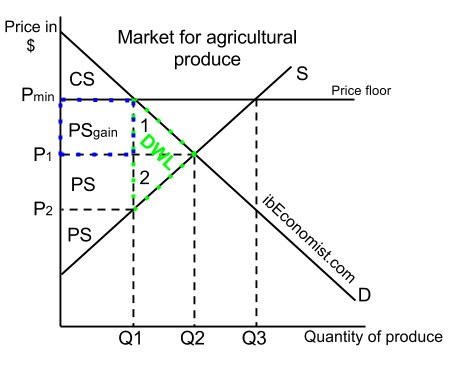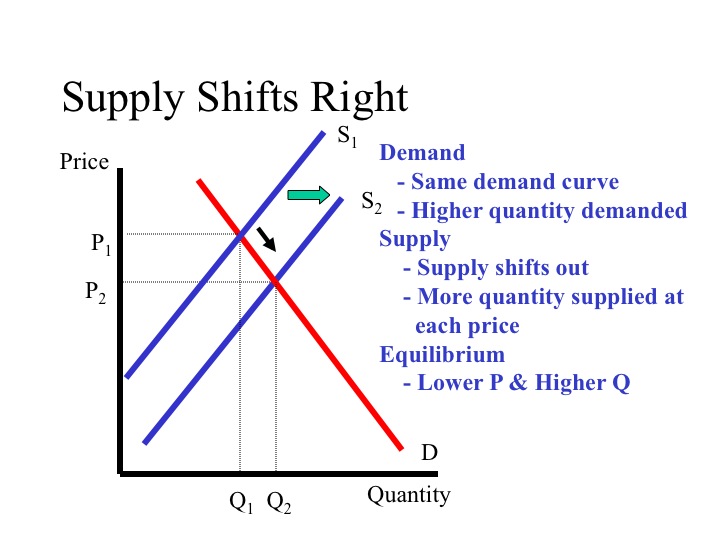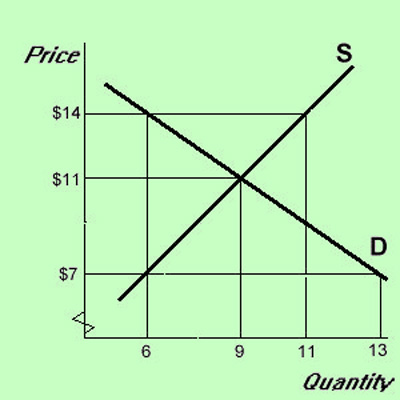Does Price Floor Affect Equilibrium

However price floor has some adverse effects on the market.
Does price floor affect equilibrium. For example many governments intervene by establishing price floors to ensure that farmers make enough money by guaranteeing a minimum price that their goods can be sold for. The most common example of a price floor is the minimum wage. Price and quantity controls. Price floor is enforced with an only intention of assisting producers.
Price floors are only an issue when they are set above the equilibrium price since they have no effect if they are set below market clearing price. Types of price floors. A binding price floor is one that is greater than the equilibrium market price. Minimum wage and price floors.
But the price floor p f blocks that communication between suppliers and consumers preventing them from responding to the surplus in a mutually appropriate way. If price floor is less than market equilibrium price then it has no impact on the economy. Suppliers can be worse off. A price floor is a government or group imposed price control or limit on how low a price can be charged for a product good commodity or service.
Government set price floor when it believes that the producers are receiving unfair amount. How does a price floor set above the equilibrium level affect quantity demanded and quantity supplied. The equilibrium price commonly called the market price is the price where economic forces such as supply and demand are balanced and in the absence of external. A price floor or minimum price is a lower limit placed by a government or regulatory authority on the price per unit of a commodity.
A price floor is a form of price control another form of price control is a price ceiling. A price floor set above the equilibrium is an attempt to make the price higher. Example breaking down tax incidence. When they are set above the market price then there is a possibility that there will be an excess supply or a surplus.
This is the currently selected item. For a price floor to be effective the minimum price has to be higher than the equilibrium price. Consumers are clearly made worse off by price floors. The effect of government interventions on surplus.
A price floor must be higher than the equilibrium price in order to be effective. Price ceilings and price floors. How price controls reallocate surplus. Taxation and dead weight loss.
That will create a surplus. They are forced to pay higher prices and consume smaller quantities than they would with free market. A price ceiling is a legal maximum price but a price floor is a legal minimum price and consequently it would leave room for the price to rise to its equilibrium level. Governments usually set up a price floor in order to ensure that the market price of a commodity does not fall below a level that would threaten the financial existence of producers of the commodity.
There are two types of price floors.


















